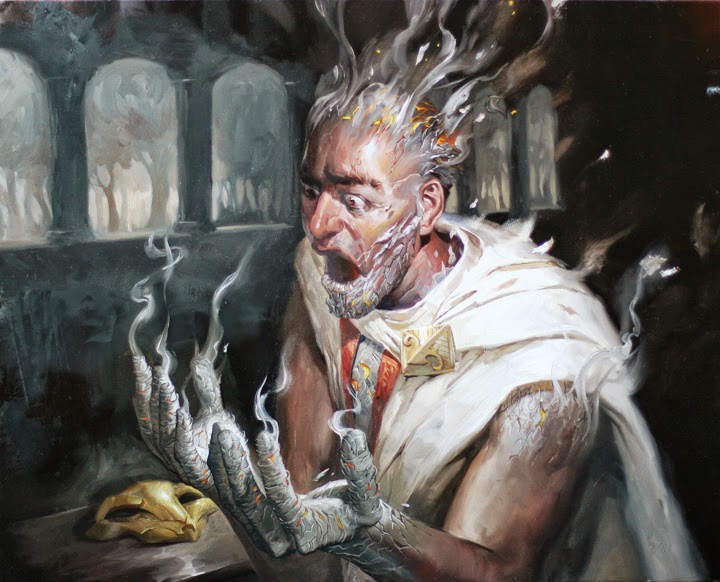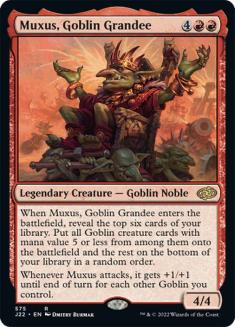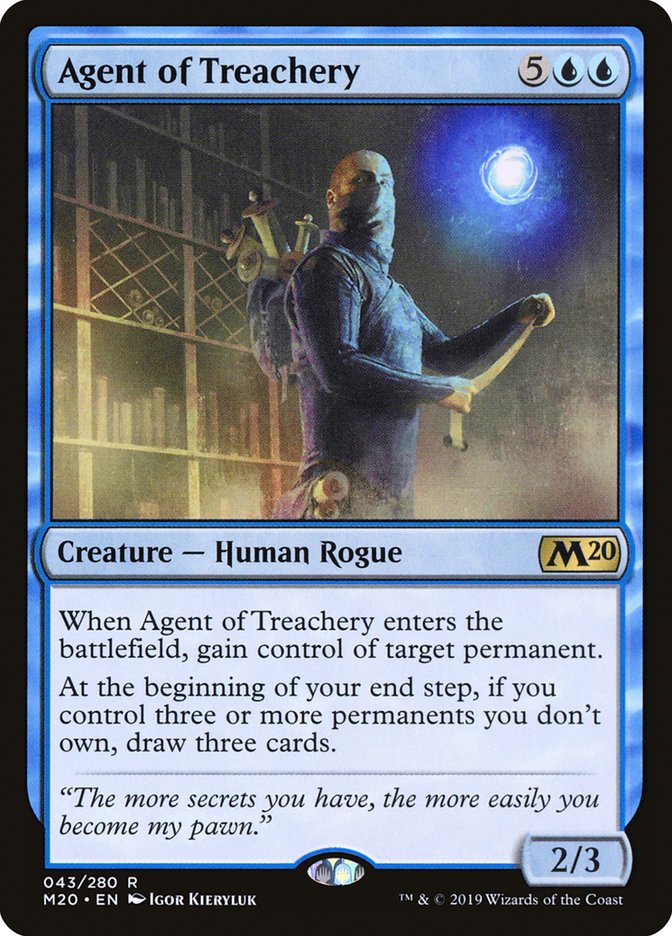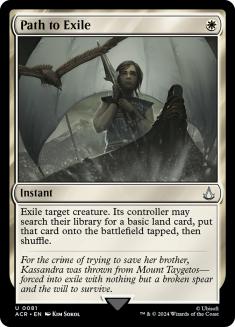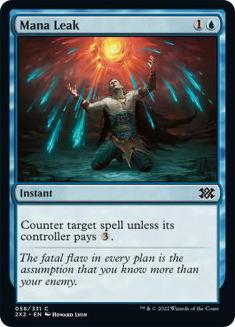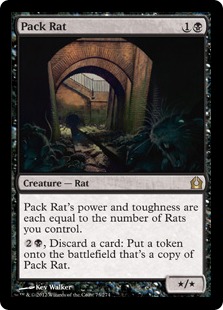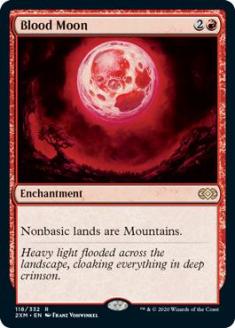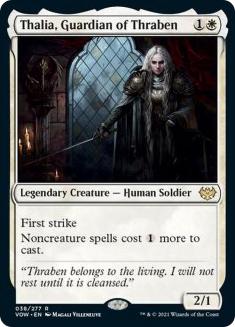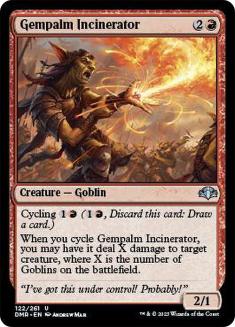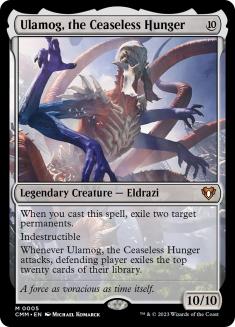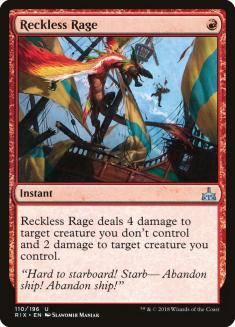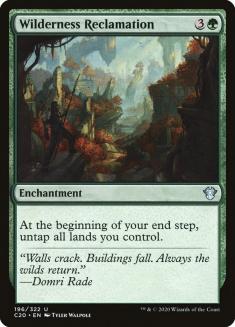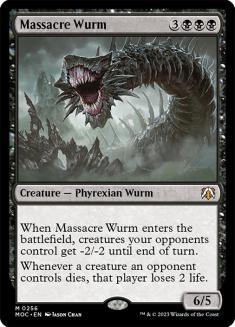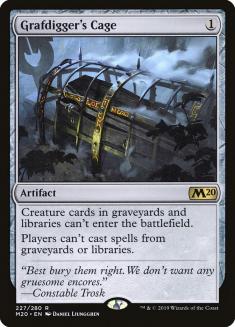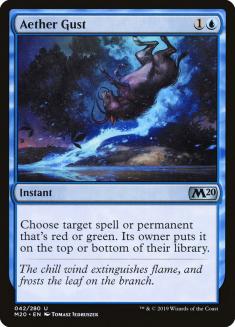Historic is a wild format. Patrick Chapin did a great job summing up the experience of trying to take in just what’s legal in the format, which is a serious undertaking for those of us who are used to thinking about formats based on when cards were released, but what that doesn’t really capture is equally important — what isn’t legal. Historic is a large format; there are a lot of cards that are legal, but these cards have a noticeably different slant compared to other large formats.
We’re used to this idea that the bigger the format is, the lower we expect mana curves to be — where multiple cards do the same job, you want the cheapest option, which drives costs down overall to the point where the average amount of mana spent on a spell in Legacy historically might be just barely over one after factoring in all the Force of Wills and Lotus Petals.
However, somehow, despite the size of Historic, people are talking about whether or not a six-mana creature will end up getting banned, joining the seven-mana creature that’s already banned.
The best decks aren’t all cheap spells. In fact, the curves are almost identical to curves in Standard. So what’s going on? Why is this format different?
Well, the answer is simple: the format has been curated this way. As I mentioned, larger card pools reduce curves because there are cheaper cards that do the same thing that more expensive cards do as the format expands, but that just isn’t true in Historic.
In Modern, for one mana you can kill most creatures thanks to Lighting Bolt, Fatal Push, and Path to Exile. In Historic, we’re looking at Shock and Disfigure, which are just too narrow to replace more expensive removal.
But it’s not just creature removal, it’s any interaction. In Modern, we have Force of Negation, Mana Leak, Remand, and Logic Knot, versatile counterspells for zero mana or two mana. In Historic you have to control a certain kind of creature if you want a flexible two-mana counterspell that taxes more than two mana.
In Historic, any threat seems to be fair game. Pack Rat’s barely noticed, despite dominating its Standard format, but they know how warping an efficient answer can be, and so far, they’ve kept them out of the format.
But these reactive answers aren’t the only cards missing. We can see that they’re more willing to print prison elements than efficient answers based on the inclusion of Thalia, Guardian of Thraben, but again, comparing to Modern, there’s no Chalice of the Void (not that it would even really matter in a format where cheap spells are this weak), no Blood Moon (fortunately), and no Ensnaring Bridge.
This isn’t as much about a change in philosophy as the restriction on strong one-mana interaction seems to be. We have cards like Damping Sphere; Deafening Silence; Grafidgger’s Cage; and Thalia, Guardian of Thraben that proactively prevent various degenerate combo strategies from functioning. The smaller card pool just takes out some of the most impactful prison cards, especially those that really barely make sense in Modern but sneaked in with Eighth Edition.
Pioneer and Historic are divergent paths, neither explicitly stronger than the other exactly, but even Pioneer includes Thoughtseize and Fatal Push, and because they’re so much better than other one-mana effects in Pioneer, they’ve played a huge (one might argue too huge) role in shaping the format.
Historic doesn’t have that. Historic, at its core, is a format almost without interaction. Yes, technically people can still kill opposing creatures, but interactive spells are so weak and so narrow that it’s extremely difficult to play any of them in your maindeck.
Most Goblin decks aren’t even playing four Gempalm Incinerators in their maindeck despite the fact that it’s one of the best removal spells in the format, because there are too many decks that you just don’t want removal against.
So what happens in a format where almost all interaction is in the sideboard?
Ships passing in the night.
Two decks try to do their big thing and end the game before the opponent does their big thing.
One player tries to hit Goblin Chieftain and Krenko, Mob Boss off Muxus, Goblin Grandee to end the game before their opponent uses Lukka, Coppercoat Outcast to put Craterhoof Behemoth onto the battlefield; or go off with Kethis, the Hidden Hand; or hit them with a large Explosion.
Theoretically, it seems like a format like this might be exploitable with the right kind of interaction. It’s pretty tempting to try to counter spells when everyone’s casting five- and six-mana game-ending threats at sorcery speed, but if you try to do that, as I did, you run into the other side of the format — Ulamog, the Ceaseless Hunger; Thought Distortion; and Field of the Dead. You absolutely can’t try to play a long game that doesn’t play to the battlefield in a format with these threats. It just doesn’t work. You never beat these cards.
So instead, the most successful deck at the moment, Temur Reclamation, is the “interactive deck” with roughly two Mystical Disputes and two Aether Gusts. Four total narrow soft counters. That’s all the format really allows.
One could make a reasonable case that the best interactive deck in the format is Boros Feather, a deck that effectively counters opposing removal spells and uses removal spells on opposing creatures.
I should also acknowledge Mono-Blue Aggro. I don’t think the deck is strong enough, but it does play a ton of cheap interaction. This is the deck that most feels like an old Legacy deck or something, and it makes some sense as a way to try to punish other players for the fact that they don’t have cheap removal to combat your one-mana creatures, and it very much tries to end the game before the big control wreckers come down while countering the normal game-ending threats.
Looking through the results of recent Historic tournaments, the first thing that stands out is the prevalence of Temur Reclamation. To my mind, merely banning Nexus of Fate and not Wilderness Reclamation was a mistake, but at the same time, I don’t really think banning Wilderness Reclamation would essentially change anything about the format.
Specifically, I don’t think Temur Reclamation itself is uniquely pushing any other decks out of the format. Temur Reclamation is one of many decks honoring the rules of engagement for the format, and it happens to come out on top while doing so, but it merely follows the rules of engagement. It doesn’t dictate them.
I think this is an interesting and noteworthy distinction. Some decks place a special constraint on a format that dictates the rules of engagement. When Field of the Dead is the best card, you can’t play slow decks. When Cryptic Command is the best card, you can’t fill your deck with expensive sorceries. Historic’s texture, its essential lack of interaction and pressure to have a consistent plan to end the game promptly, isn’t a reaction to Temur Reclamation; it’s a reaction to the fact that the format has so many great threats and so few great answers. Maybe Wilderness Reclamation is a slightly better plan to end the game than Lukka, but it’s essentially just a cosmetic difference.
So maybe they’ll ban Wilderness Reclamation at some point and maybe they won’t, but either way, you’ll just be trying to figure out which deck more reliably does its thing (or, in my preferred terminology, “expresses its narrative”) before the other.
So what does this mean for brewers like me? It’s not good.
Why not? If I understand what the format’s about, shouldn’t I be able to exploit that?
Well that’s just it. It’s not really exploitable because you can’t really react to it. All the answers are too narrow. I can look at Goblins and say, “I bet Massacre Girl would be pretty sweet against this deck, or maybe better yet, Massacre Wurm,” but I can’t exactly play those cards in a format where the most played deck is Temur Reclamation. And do I really want to play a bunch of Negates; Narset, Parter of Veils; and Teferi, Time Ravelers to beat Wilderness Reclamation in a format with a bunch of tribal creature decks?
The pressure is simple: just find a deck that wins as quickly and consistently as possible. Essentially, find the deck with the best goldfish matchup/kill rate. Okay, but that’s Level 1. That’s what everyone tries to do by default. It’s hubris to think I can just find a faster combo deck than Kethis or a faster aggro deck than Mono-Red that somehow everyone just hasn’t noticed.
So how do you brew for a format like this? Don’t. Or more specifically, don’t build interactive decks.
There are some cool cards that I think would be fun to build decks around like Oona’s Blackguard; Riptide Laboratory; or Tinybones, Trinket Thief. But none of those cards will result in a deck where I’ll ask myself, “How quickly does this kill the opponent?” and end up with an answer other than, “I don’t know. I guess I’d hope to win eventually.”
If you can find an underexplored combo, that’s a different story. Michael Majors introduced Jeskai Breach, which is essentially Kethis minus Kethis. Brewing in this vein could be productive if you’ve identified a combo you think is underexplored. Historic is still new enough that it’s possible that the best combo deck hasn’t been built yet, but finding these things is hard.
The other major point of focus should be on the sideboard. The interaction in the format is too narrow given the diverse threats that exist, but the interaction we have is remarkably efficient and powerful. While there may not be a lot of room for innovation or reacting to the metagame in your maindeck, the sideboard is a completely different story. Identifying your bad matchups and the high-impact cards in those matchups can easily make the difference in a tournament.
Grafdigger’s Cage is in a great position as it can stop Muxus, Goblin Grandee’s trigger; Lukka, Coppercoat Outcast’s Polymorph ability; Kethis, the Hidden Hand; and Underworld Breach, but do you really want to rely on a permanent to try to lock out combo decks that try to kill you in a single turn knowing that they play Teferi, Time Raveler, or do you need a more proactive strategy against them? Maybe make a simple swap like using Tormod’s Crypt instead if you’re more concerned about the graveyard combo decks, so that if they do answer it with Teferi, you can at least undo any progress they’d made to that point and stop them from drawing a card.
Building your sideboard in this format isn’t just about finding the strongest individual cards against a deck; it’s about identifying the role you’ll be taking in sideboard games. If you’re both playing blue decks with few creatures, Mystical Dispute and Dovin’s Veto are strong in very different spots. Mystical Dispute is good for forcing your own spells to resolve and playing a tempo game, while Dovin’s Veto is good for preventing your opponent’s spells from resolving and playing a longer game. More often than not, it’s not that one is stronger than the other against a deck like Temur Reclamation; rather, which is stronger in your matchup depends on the role you intend to take.
As a result, your sideboard should be your place to express yourself as a player. You don’t just want to copy and paste a sideboard. You want to construct a plan that matches the exact way that you expect to play the games.
This focus on sideboarding is an essential feature in any ships passing in the night/non-interactive format, and Core Set 2020 and Throne of Eldraine color hosers make it especially true now.
As a corollary it’s worth noting that Historic Best-of-One and Historic Best-of-Three are completely different formats, which is worth paying attention to with a format that exists only on Magic Arena, where Best-of-One play is common.
If you’re just getting into Historic, it can be tempting to play Best-of-One to try decks more quickly before committing to longer matches, but if you’re attempting to prepare for a Best-of-Three tournament, I’d strongly suggest spending as little time playing this way as possible, as the most important thing you’ll be learning in testing is what you want your strategy to look like in sideboard games.
Unless the driving principles we’ve seen in Historic change, there likely will always be a deck that does the best thing. We can ask for Wilderness Reclamation to be banned, but it won’t really change anything, so if you want to play Historic, find a deck that does something you like doing and make it happen, and focus your energy on your sideboard.

